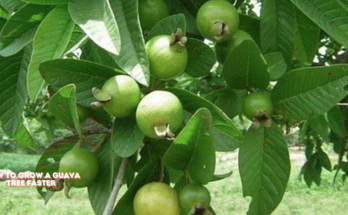Hey there, fellow green thumbs! Today, let’s dive into the world of raspberries and uncover what Does raspberry seeds look like.
As I stroll through my garden, the anticipation builds – each raspberry is a tiny treasure waiting to be explored. These seeds, resembling delicate specks within the berry’s flesh, hold the promise of future growth.
The unique texture, a blend of softness and subtle crunch, captivates my gardening curiosity. Join me on this personal journey as I unravel the mysteries of these tiny wonders.
Through my eyes, let’s discover the beauty that lies within the unassuming raspberry seeds. Ready to explore nature’s marvels in the palm of your hand?
What Does Raspberry Seeds Look Like?
Gazing at a freshly plucked raspberry, I observe the seeds, small and pale, nestled within the juicy flesh. These tiny wonders boast a unique texture, akin to miniature grains with a hint of crunch.
Their appearance, subtle yet distinct, adds intrigue to the vibrant fruit. I find joy in the contrast between the succulent berry and the unassuming raspberry seeds.

It’s this blend of textures that makes the gardening journey truly fascinating. So, in a nutshell, envision delicate yellow spheres within the berry – that’s what raspberry seeds look like in my garden.
What size are raspberry seeds?
Raspberry seeds are about 2-2.5 mm in size. A single raspberry weighs 3–4.5g and has approximately 100 druplets.
These droplets have a tasty pulp inside a single-core seed. The makeup of raw raspberries is 12% carbs, 6% dietary fiber, and 86% water.
Do Raspberries Have Seeds Like Strawberries?
Yes, raspberries have seeds, but they differ from strawberries. In raspberries, the seeds are found inside the small drupelets that make up the fruit’s structure, while strawberries have their seeds on the surface, dotting the outer skin.
How Do You Identify Raspberries?
To identify raspberries, look for clusters of small, round berries with a hollow center when picked. Raspberries are typically red, although there are also purple and black varieties.
The berries should have a juicy texture and a sweet aroma when ripe. The leaves of the raspberry plant are serrated and arranged in groups of three, with a distinctive green color.
Familiarizing yourself with these features will help you accurately identify raspberries in the wild or your garden.
Is Raspberry Red Or A Purple?
Raspberries come in various colors, with red being the most common. However, there are also purple and black varieties of raspberries.

1. Close-up Exploration: Unveiling the Microcosm of Raspberry Seeds
In my gardening journey, I recommend taking a closer look at raspberry seeds. Grab a magnifying glass and observe these tiny wonders up close.
Notice their size, texture, and the way they snugly fit within the drupelets. This detailed examination adds a new layer of appreciation for the intricacies of nature.
2. Raspberry Anatomy 101: Understanding the Composition of Seeds
Delve into the anatomy of raspberries to truly grasp what raspberry seeds look like. Each raspberry, weighing 3–5g, consists of around 100 druplets, each housing a single central seed.
This breakdown helps in understanding the balance between the juicy pulp and the seeds, giving insight into the fruit’s composition.
3. Water, Carbs, and Fiber: Raspberry Seeds in Nutritional Context
Beyond appearance, consider the nutritional aspect of raspberry seeds. Raw raspberries are composed of 86% water, 12% carbohydrates, and 6% dietary fiber.
Understanding this nutritional context adds a holistic perspective to the role these seeds play in the overall health benefits of raspberries.
4. Seasonal Changes: Observing Variations in Raspberry Seeds
As a dedicated gardener, note the seasonal variations in raspberry seeds. During different stages of growth and ripening, the appearance of the seeds may subtly change.
This keen observation allows you to connect with the lifecycle of raspberries, enhancing your ability to nurture them effectively.

5. Culinary Adventures: Creative Uses of Raspberry Seeds
Extend your exploration beyond the garden by incorporating raspberry seeds into your culinary endeavors.
From adding texture to smoothies to using them as a crunchy topping for desserts, discovering creative ways to use these seeds brings a delightful twist to your kitchen adventures.
FAQ
What do raspberry seeds look like?
Raspberry seeds are small, pale-yellow spheres, typically around 2-3mm in size, nestled within the juicy flesh of the berry.
How many seeds are there in a raspberry?
An individual raspberry consists of around 100 druplets, each containing a single central seed.
Can you eat raspberry seeds?
yes, raspberry seeds are edible and add a slight crunch to the overall texture of the berry.
Do all raspberries have the same seed appearance?
While the basic characteristics remain similar, the appearance of raspberry seeds may vary slightly between different varieties and stages of ripeness.
Are there different colored raspberry seeds?
No, raspberry seeds are generally uniform in color, appearing as small, pale-yellow grains within the berry’s flesh. The color of the berry itself may vary, with red, purple, and black being common variations.
Conclusion
In wrapping up our journey into the world of raspberry seeds, raspberry seeds isn’t nature just splendid? The up-close exploration revealed the intricacies of these tiny marvels, enhancing our appreciation for the garden’s wonders.
Remember, each raspberry tells a unique story through its seeds, contributing to the symphony of flavors and textures.
As we celebrate the balance of juicy pulp and delicate seeds, let’s continue our gardening adventures with newfound enthusiasm. Happy gardening!



